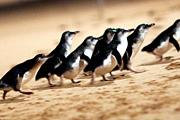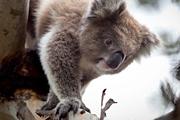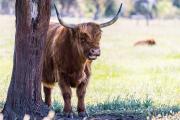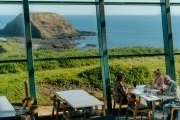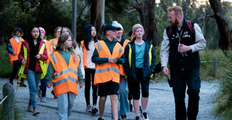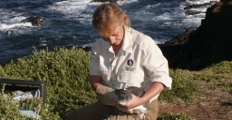What's happening in nature on Phillip Island during spring?
Spring is an exciting time in nature with a lot of wildlife in their breeding season and migratory birds reaching our shores. Here's a quick look at what you might see.
- Pacific gulls bring their chicks from the islands off Wilsons Promontory to feed. These large gulls reach maturity at approximately four years of age and are listed as significant fauna in the Nature Parks areas because of their colonial nesting habits.
- Huge swells change the coastline almost daily and wash up treasures (and sadly often trash) along the high tide line.
- Short-tailed shearwaters return to Phillip Island to renovate their sand dune burrows – watch for them flying overhead at sunset.
- Southern right whales approach the coast on their migration south.
- Coastal beard heath, coast wattle and New Zealand spinach flower and coastal saltbush have stunning red berries.
- Insects such as brown butterflies and leaf skeleton beetles become more active and the air sings with the sound of crickets and cicadas.
- Goose necked barnacles are found on beach-washed cuttlebones and timber.
- Grey butcherbirds, grey fantails and black-faced cuckoo-shrikes are nesting.
- Male echidnas are out and about looking for a mate and form ‘echidna trains’ with their potential mates.
- Migratory birds arrive on our shores including sandpipers, curlews, godwits, plovers, knots and stints.
- Possums have young in their pouch - take extra caution on the roads, please!
- Raptors (birds of prey) actively hunt mice and insects and can be seen on power poles surveying their hunting grounds.
- Reptiles such as copperhead snakes, skinks and lizards emerge and bask in the sun.
- Ravens and magpies make their large, stick nests.

Caring For Wildlife Together
Spring brings wildlife out and about as they get busy breeding. Our team offers a few handy hints about how to live with wildlife this spring.
Birds are nesting
Spring winds can blow nests out of trees. How you can help:
- Put the nest back in the tree it came from or one nearby.
- If the nest is destroyed, you can make an artificial nest and securely attach high in a tree, birds have the best chance of survival when raised by their parents.
Baby birds are out
Chicks are starting to emerge from their nests and are learning to fly, this can make them vulnerable. How you can help:
- There is no need to interfere unless they are vulnerable to being attacked by a predator.
- If the bird is unsafe on the ground, it can be moved to a low branch.
- Watch and wait - their parents will often be watching from a distance and will return when they feel safe to do so and appreciate your help.
Swooping birds
Some adult birds will protect their nest/chicks by swooping anyone who gets too close, so it’s best to keep clear of these areas wherever possible. The following is a list of birds that may swoop:
- Magpie
- Magpie Lark
- Laughing Kookaburra
- Red Wattle Bird
- Grey butcherbird
- Masked Lapwing
Echidnas
Keep an eye out for echidna trains during breeding season!
- If an echidna visits your backyard - keep your pets inside, and give the echidna space and time to move on of its own accord
- Give way to echidnas crossing the road, they have large territories, and may have puggles (young) stashed away nearby.
Snakes in backyards
- Do not attempt to capture or move.
- Keep pets inside and allow snake time to move on.
- Call a qualified snake handler if required or DELWP for further information.
To report sick or injured Phillip Island wildlife
- Contact Wildlife Victoria 24/7 on 8400 7300
- Cases can also be logged at wildlifevictoria.org.au
Want to keep learning?
Keep up with our latest social media posts via the channels below.
Don't forget to share images with the Nature Parks by using our hashtag #phillipislandnp.






